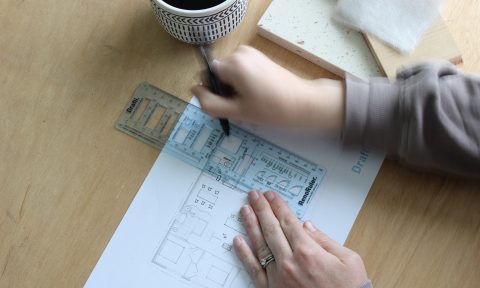Considering installing a pool in your rental property or during your reno? We Aussies are a water loving people but a swimming pool can be a long term expense. If you’re considering adding a swimming pool to your property, either as an owner or as a landlord, it’s important to consider the pros and cons before making the decision.
Let’s take a look at some of the advantages and disadvantages and also outline some of the pool items which attract depreciation benefits for their owners.

- Landlords must ensure areas comply with pool safety legislation – Safety is the most important factor landlords must consider if a rental property has a pool. It is important to check the requirements each state has in place to ensure your pool and surrounding areas are compliant to help prevent incidents of drowning or other potential hazards that can occur in and around water. Whilst the rules in each state differ, some things to consider when scrutinising the safety of a pool area include ensuring adequate pool fencing which meets any height guidelines; checking that gates are fitted with a latching device, swing outward from the pool area and are self-closing; have filtration systems which comply with Australian standards and do not use hard covers as safety barriers in place of a fence for spas. Earlier this year, the New South Wales Government also introduced new laws for pool and spa compliance last year from the 29th of April 2016. Those with properties with pools located in this state must obtain a Swimming Pool Certificate of Compliance before properties are sold or leased.
- Pools increase maintenance and insurance costs – Owners of rental properties must always be prepared to budget for necessary repairs and maintenance costs. However, if a rental property contains a pool the potential costs are generally higher. If tenants are unwilling to keep the pool cleaned regularly, this may mean hiring a cleaner to complete the job to avoid the water turning into a murky algae and leaf filled disaster. As there is an increased chance of accidents occurring in properties which contain pools, insurance expenses are also likely to be higher, so investors must factor this into their budget. It isn’t all bad news though. Investors are able to claim the costs of repairs, maintenance and insurance in the year the expense is incurred when they visit their Accountant.
- Pools may not necessarily add value or increase rent – Whilst pools sound like appealing features, they don’t necessarily add value to a property or help to attract potential tenants. In fact, oftentimes they can be seen as a hassle and even dangerous, particularly if tenants have a young family. A recent survey of more than 1,000 Australian homebuyers by finder.com.au found that swimming pools were the seventh most desirable feature in a home. More desirable items on the list included air-conditioning, a garage or carport area, a backyard or garden, solar panels, a deck or pergola and a dishwasher. Needless to say, pools can be a hit or a miss and research suggests that investors should only consider buying a property with a pool or renovating to add one if it is located in the right suburb. This is because pools are far more likely to receive use in areas with warmer climates. Investors need to consider the fact that during winter and cooler months, pool areas will often go unused which can result in the condition of the area deteriorating. Should a rental property become vacant at the wrong time, this could make it less attractive to rent to potential tenants.
- Depreciation benefits – One of the biggest benefits of renting a property with a pool is the depreciation deductions the owner will be eligible to claim. Investors who are aware of their eligibility to claim depreciation deductions often focus on the building itself and the assets contained inside. However, outdoor items and structures are also depreciable due to the wear and tear that occurs over time. The following graphic provides examples of some of the structural items which can be claimed as a capital works deduction and some of the easily removed assets which can be depreciated as plant and equipment.
As you can see, items in the pool area create a $2,8746 splash of deductions in the first financial year alone for the owner of the above property. Fixed items such as the in-ground pool, slide, diving board, spa, pool fence and pool house resulted in $1,577 in capital works deductions in the first financial year for the owner. Easily removable plant and equipment assets such as the furniture, pergola, couch, outdoor lights and the pool filter and pump resulted in $1,297 in depreciation deductions for the owner in the first year.
Bradley Beer (B. Con. Mgt, AAIQS, MRICS, AVAA) is the Chief Executive Officer of BMT Tax Depreciation.
For more details on how BMT can help you, visit www.bmtqs.com.au










